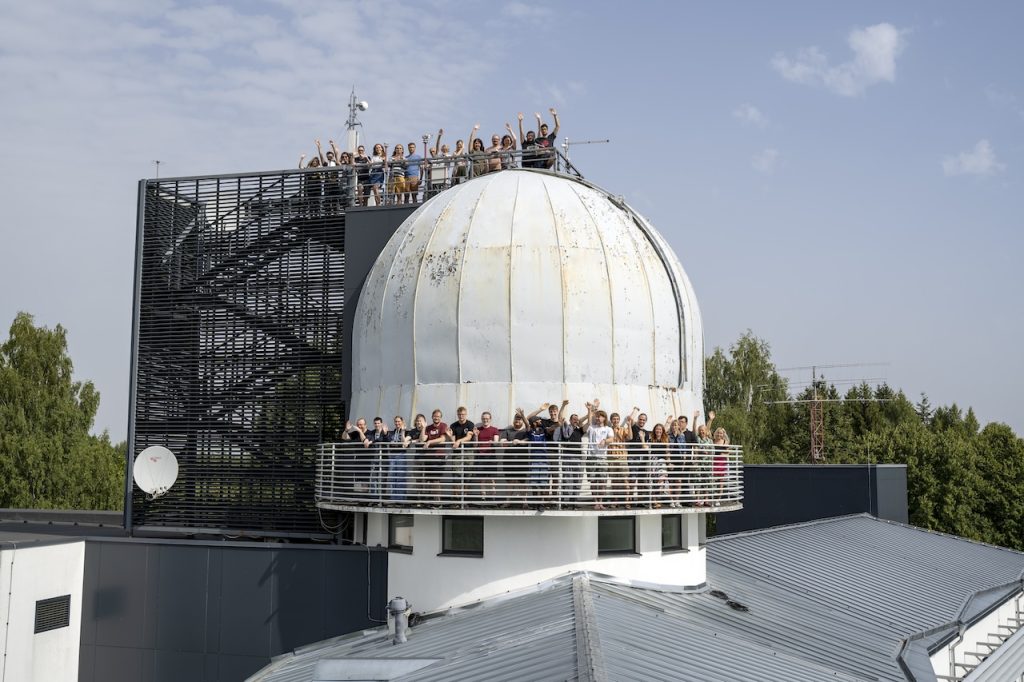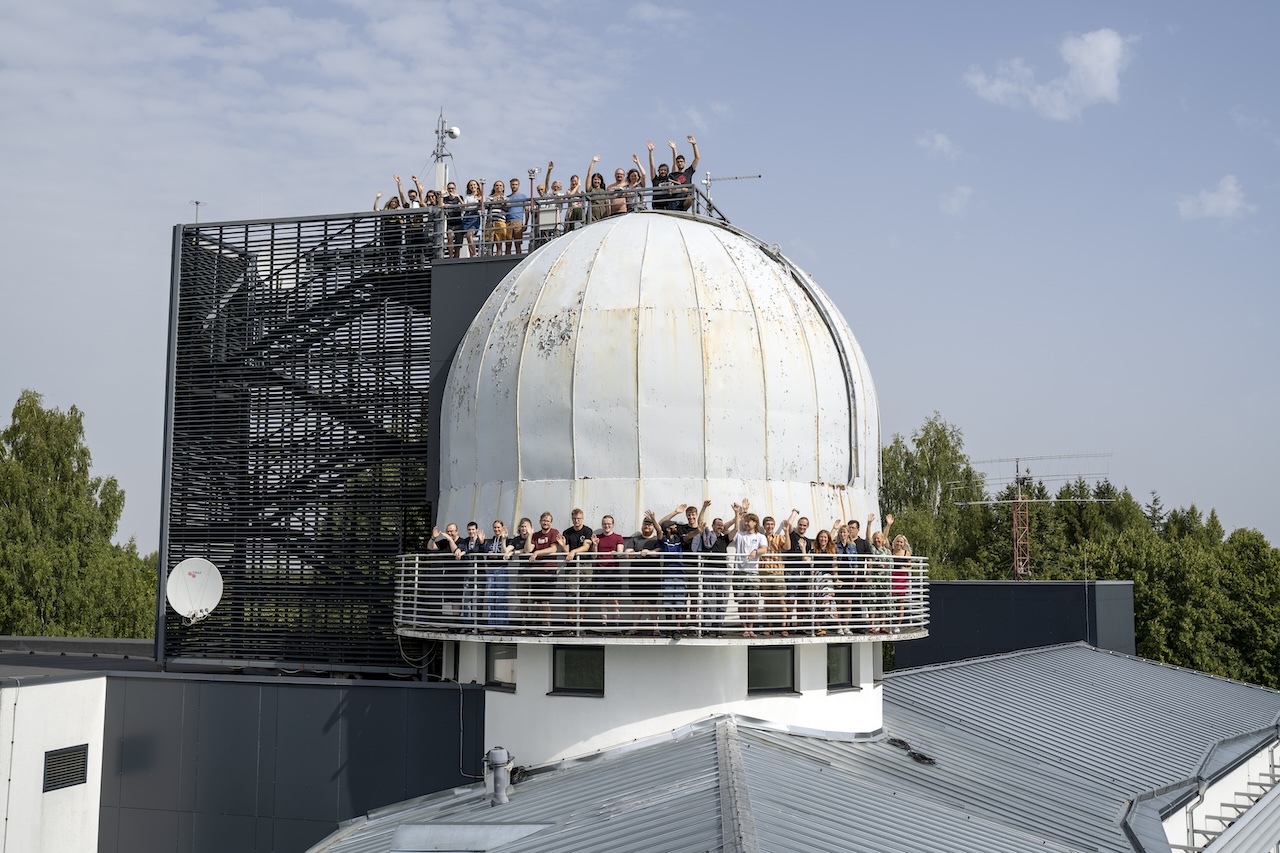Tartu Observatory is an Estonian space center whose main task is research and development. We train young scientists in astronomy, remote sensing, and space technology, and we are a recognised partner in international networks.
Tartu Observatory has accredited test laboratories where companies can test their equipment in different environmental conditions. It is possible to calibrate and characterize optical devices in our laboratories.
The observatory´s visitor center introduces the latest achievements in space science and technology and the scientific profession to all those interested. We offer active learning programmes for school children, where students can solve tasks, give presentations and participate in practical work.
“Magic Carpets” project:
Celestial Bodies – Navigating Between Scientific Knowledge and Indigenous Wisdom
Residency “Celestial Bodies – Navigating Between Scientific Knowledge and Indigenous Wisdom” brought together four artists (Eglė Šimėnaitė, Juss Heinsalu, Marit Mihklepp, Piibe Kolka) for almost a month period to interact with the scientists community of Tartu Observatory / Estonian Space Centre in South of Estonia.
The Observatory’s main task continues to be research and development wherein they train an international community of scientists in astronomy, remote sensing, and space technology. The observatory´s visitor center introduces the latest achievements in space science and technology, as well as offers active learning programmes for school children. Space center’s community consists of about 100 employees.
The artists had an opportunity to get a thorough introduction to the observatory’s facilities as well as have one to one conversations with the scientists from different departments. The residency ended with a public showing on the 15th of December wherein the artists presented their process and outcome. Eglė Šimėnaitė is a performance artist who worked with the notion of a blue hour. The work took the shape of a collective meditation / performative installation. Piibe Kolka, who is an experimental filmmaker, has originally grown up at the observatory’s grounds as his father is a scientist there. The showing took the shape of a performative lecture where she guided us through the grounds of the space centre combining it with her personal memories. Marit Mihklepp is an artistic researcher who is interested in meteorites. She showed the audience an experimental video clip transforming a nearby pond into a meteorite crater through speculative storytelling. Juss Heinsalu is a ceramist whose main material and interest is clay. He ended up introducing us to limestone plates from where he had engraved scientific drawings – therefore bringing into the same image plain fossils of the earth and the cosmic structures.
Public event triggered a wide range of audience including the scientists as well as the artists from Tartu and Tallinn. Everyone seemed to agree in the end that artists and scientists are rather similar in nature and how they are in the world – carried by an infinite curiosity
Number of community members included in the project: 14
Reasons for participating in the “Magic Carpets” project:
Excitement and curiosity to bring together art and science, as well as to explore how the scientists might influence the work of the artists and vice versa.

